Adhesive Capsulitis of Shoulder: Physical Therapy Treatment & Exercise
Introduction of the Adhesive Capsulitis
- Adhesive Capsulitis is also known as the frozen shoulder where the Shoulder joint becomes stiff and painful.
- This condition is characterized by stiffness & pain in the shoulder joint & shoulder becomes very hard to move.
- Signs & symptoms begin to gradually, then worsen over time & after resolve, usually within 1 to 3 years.
- Risk of the developing this disease is increases when recovering from a medical condition/ procedure that prevents from moving the arm like a stroke/mastectomy & also addition to the people who have diabetes.
- Treatment of the frozen shoulder involve of to the ROM exercises.
- Sometimes given to the patient corticosteroids & medications injection in the joint capsule.
- In the small % of the cases, surgery means arthroscopic is indicated for the loose of the joint capsule after that joint is move the more freely.
- Usually this condition is recur in the same shoulder, but into the some people in this condition develop into the opposite shoulder.
- Physiotherapy is focus on the shoulder flexibility, which is the primary treatment of this condition .
- This condition most commonly affects people between ages of the 40 and 60.
- Women are more affected than men.
Anatomy of the Shoulder Joint
Bones of the shoulder
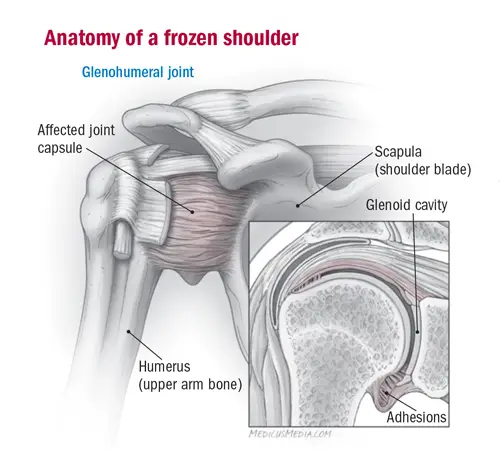
- Bone of the Upper arm = humerus; it is the “ball” of the shoulder.
- Scapula = it is a flat & triangular bone which is known as the shoulder blade.
- It is give to the attachment points of the many muscles & ligaments.
- Glenoid = it is a shallow “socket” on the side of the scapula which receives the ‘ball’ of the humerus.
- Both are do Together with each other & from the “ball and socket” arrangement into the shoulder.
- Clavicle = it is known as the collarbone
- Which is appears to be straight & it is actually forms in S-shape.
- Thorax / rib cage which is give to the attachment in muscles & ligaments.
Bone junctions/joints of the shoulder:
- These are 4 bone junctions around the shoulder.
Glenohumeral joint :
- It is to the main joint of the shoulder.
- In this joint, glenoid of the scapula & the head of the humerus are come to the together.
- Flat socket of this glenoid is surrounded only 20% – 30% of the humeral head.
- Because of this reason it is fit to the poorly,so that for the support of the joint ; it is relies heavily onto the surround to the soft tissue.
- lab-rum = it is a ring of to the fibro cartilage tissue which is attached of on to the glenoid & it is depend on the socket of the encircle more of on to the humerus.
Acromioclavicular joint / AC joint :
- It is to the bony point of the top of the shoulder.
- It is stabilizes the scapula on to the chest, by connecting of to the acromion on to the scapula to the clavicle which is known as the collar bone, disk of the fibrocartilage which is thick act to the shock absorb between the bones.
- surrounding of the capsule & ligaments give to the joint stability.
Sternoclavicular joint /SC joint :
- It is connect to the other end of the clavicle of the sternum which is known as the breastbone in the joint contain a fibrocartilage disk which is help the bone for to the achieve to the better fit.
- It is also get to the excellent support from the joint capsule & surrounding ligaments.
Scapulothoracic articulation :
- It is to the area where the scapula, is embedded into the muscle so glide over to the thoracic rib cage.
- Surrounding of the muscles & ligaments are kept on to the scapula into the proper position so that arm is moving correctly.
Cartilage of the shoulder:
- There are Two types of the cartilage is a viable into the shoulder joint:
Articular cartilage :
- Cartilage is shiny white coating of to the cover which is to the end of to the humeral head & line in to the inside surface of to the glenoid.
- Two purposes of this cartilage:
- It is provide to the slick or smooth surface for easy movement.
- It is become to the shock absorbed & protect the underlying bone.
Fibrocartilage :
- It is the thick tissue that forms the disk of the AC / SC joints & to the labrum this ring is dependent on the glenoid.
- Fibrocartilage performs the three roles:
- It acts as a cushion for shock absorption.
- It is Help for to stabilize to the joint by to the improving of to the fit of to the bones.
- It is Act as to the spacer & improve to the contact between to the articular cartilage surfaces.
Ligaments of the shoulder:
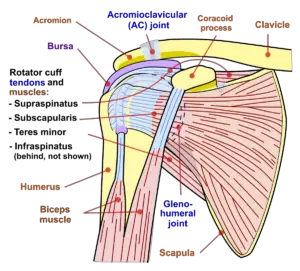
- Shoulder is relive to the heavily on to the ligament for to the support.
- It is attached to the bone to bone & provide to the static stability into this joint.
- It is become to the tight & loose with to the normal motion.
- It is keep to the joint within into the normal limits of to the movement.
- Glenohumeral ligaments = it is attached into the layer from the glenoid labrum for to the joint capsule of the head of the humerus.
- Coracoacromial arch = it is to the group of the ligament which is the spans to the coracoid process bony projections & to the acromion.
- Coracoclavicular ligaments & acromioclavicular ligament = it is provide to the most of the support for the AC joint.
Muscles and Tendons of the Shoulder:
- Both work is together in to the shoulder for to the provide the “dynamic” stability of the shoulder.
- Four muscle groups are into the shoulder:
- Rotator cuff muscles:
- In to the rotator cuff muscles including to the subscapularis, supraspinatus, infraspinatus, teres minor.
- It is become the primary stabilizers which is hold to the “ball” of the humerus in to the glenoid “socket”.
- Socket is too much shallow for to the offer to the much security of to the humerus.
- Those four muscles are form the “cuff” which is around the humeral head for to secure it is firmly into the socket.
- As per the name of the muscle, this group of muscles are also rotaters into the arm.
- These muscles protect the glenohumeral joint from dislocation & to the allowing of the large muscles which is control the shoulder & give power to the arm with great mobility.
- Biceps tendon complex :
- Muscles are also help for to the keep the humeral head in to the glenoid & help to raise the arm.
- Scapulothoracic muscles
- Muscles are attach on to scapula & thorax.
- Main function of this muscles are for to stabilize the scapula for to allow for proper shoulder motion.
- Superficial muscles :
- This muscles of the shoulder is the large & outer powerful layer of the muscles.
- This muscles are on to the important for the overall function of the shoulder.
- In the group muscle includes the deltoid muscle, which covers the rotator cuff muscles.
Bursa of to the shoulder:
- It is a pillow-like sac that is filled with a small amount of fluid.
- Plural bursae = it is reduce the friction & allow the smooth glide between the two firm structures, like as bone & tendon or bone & muscle.
- Into human body has 50 bursa but into 50 the largest bursa is the subacromial bursa which is locked under the acromion of the shoulder.
- Subacromial bursa & subdeltoid bursa = it is under the deltoid muscle is often considered as the one structure.
- Bursa is separate the rotator cuff & deltoid muscle which is from on to the acromion.
Pathology of the adhesive capsulitis :
- Into the disease process affected the capsule of the anterior-superior joint ; the coracohumeral ligament & axillary recess.
- In to the Patient which have to the small joint so that tight the anterior capsule/loss of the axillary fold & synovitis [ mild to moderate] but it is not to the actual adhesion.
- Contracture of the Rotator cuff is also seen in the patients of adhesive capsulitis & contributes to decreased ROM.
- It is continue to the disagreement about the underlying pathology like as the inflammatory condition ,an go to the neurodystrophic process / fibrosing condition.
Causes of the adhesive capsulitis :
- It is occurs when the capsule is thickens & tightens around the shoulder joint which is do the restricted the movement.
- The capsule is become the inflamed & scarring develop.
- The scar formations is called adhesion.
- In Diabetes people is also occur into the people with the diabetes.
- Other diseases like as to the some additional medical problems which is associated with this disease is include:
- To the Parkinson’s disease, Hypothyroidism & cardiac disease.
- Other medical condition is a stroke
- Surgery is a mastectomy.
Classification of the adhesive capsulitis:
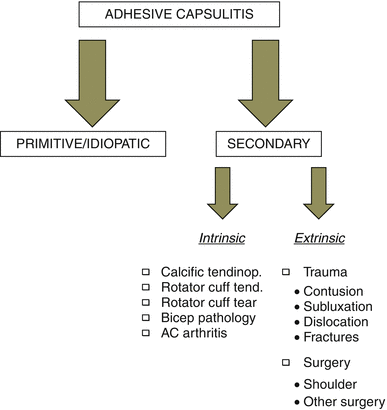
- Primary
- Secondary
- Tertiary
Stages of the adhesive capsulitis:
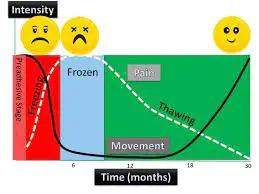
- Into this disease have to the 3 stages
- Freezing stage.
- Frozen stage.
- Thawing stage.
- Freezing stage.
- movement of the shoulder produces the pain & range of motion ROM of the shoulder starts to become limited.
- Frozen stage.
- Pain is begin to the diminish during in this stage & the shoulder is become stiff & so that use of the shoulder is also becomes to the difficult.
- Thawing stage.
- ROM of to the shoulder start to the improve.
- in the stage some people feel to the pain worsens at to the night & so that sometimes disrupting to the sleep .
Symptoms of the adhesive capsulitis:
- This disease is produce the Pain which is usually dull/aching type of pain.
- It is become to the typically worse into the early morning.
- It is mostly located over to the outer shoulder area & sometimes into the upper arm.
- Main symptoms of this disease is pain & stiffness which is become to the difficult/impossible to the move the shoulder.
- Swelling / tenderness is present in the adhesive capsulitis.
- Patient is feel the difficulty in the daily routine & also reduce the ROM of the shoulder.
- Sometimes Chest pain is the also associated symptom’s.
- High level of the Sugar = Diabetes Associated Symptom’s of this condition.
Diagnosis of the adhesive capsulitis:
Physical Examination :
- After discuss of to the symptoms & medical history; physiotherapist examine the shoulder.
- Physiotherapist is move the shoulder carefully into the all direction & see the shoulder movement means ROM in the shoulder the adhesive capsulitis
- Because of that condition ROM of shoulder is limited & patient is also feel the pain during this all motion.
- After the end of the active movement physiotherapist is perform the passive movement – means therapist give some stretch to the patient.
- In this condition patient have to limited range of motion in both actively and passively.
Imaging Tests:
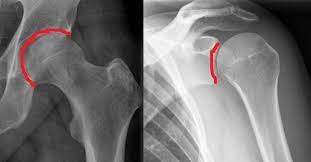
- Other test which is help the doctor for rule out the other causes of the stiffness & pain include the:
- X-rays:
- It is show the structures [ Dense ]like as the bone.
- X-rays is show to the other problems in the shoulder, like as to the arthritis.
- Ultrasound & Magnetic resonance imaging (MRI):
- This studies is create to the better image of the soft tissues.
- It is not required for the diagnosis of this condition, but it helps to identify the other problems into the shoulder, like a torn rotator cuff.
Risk factors of the adhesive capsulitis:
- Some factors which is increase the risk of the developing of to the adhesive capsulitis.
Age & sex:
- In age mostly affected the Adults
- Between 40 to 60 years of to the people.
- Particularly women is more affected than men by adhesive capsulitis.
Reduced mobility or Immobility
- People who have prolonged immobility / reduced mobility of the shoulder.
- It is a higher risk of developing adhesive capsulitis.
- Recent shoulder injury
- Immobility is to the result of to the many factors like as including:
- Recovery from to the surgery
- Injury of to the rotator cuff
- Stroke
- Broken arm
Systemic diseases:
- People who have some diseases appear to the develop adhesive capsulitis.
- Some Diseases which is increase to the risk are includes:
- Diabetes
- Hypothyroidism
- Cardiovascular disease
- Tuberculosis
- hyperthyroidism
- A vascular necrosis
- Parkinson’s disease
- Metastatic disease
- Shoulder injury like as direct impact, FOOSH, dislocation
Treatment of the adhesive capsulitis:
- Adhesive capsulitis treatment which is mainly symptomatic Medical treatment / Physiotherapy treatment & exercise are helpful into recovering if Medical / Physiotherapy treatment & exercise fails, in to the last option to the select Surgical treatment.
- Before surgery under the anesthesia joint which is mobilization also preferred the option.
Medical treatment of the adhesive capsulitis:
- Non-steroidal anti-inflammatory medicine – NSAIDs
- Into the NSAIDs Drug like as to the Baclofenac, Diclofenac & ibuprofen
- It is used to reduce pain & swelling.
- Give to the other symptomatic related medicine which is Managing the Diabetes & Chest pain.
A corticosteroid injection:
- Injection is give in to the shoulder joint for to the reduce pain & improve the ROM.
Joint distension:
- In this treatment inject the sterile water in to the shoulder capsule& stretch it.
- It is help for to move the shoulder easily.
Surgery of the adhesive capsulitis:
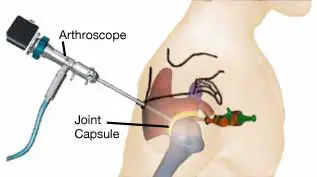
- Surgical treatment of this condition is also known as the arthroscopic capsular release.
- In the surgery use the small camera which is inserted into the shoulder joint.
- Through of to the small incisions of other; small instruments is inserted inthe incision for to treat the problem.
- In the , adhesive capsulitis the problem is thickened & tight capsule of the shoulder.
- So that in the treatment cut to the tight capsule for the allow of the joint for freedom of the mobility.
- Instruments which is insert in incision help of them release the capsule around of to the shoulder socket.
- In the Sometimes give the patient arm special splint which is keep the capsule into the shoulder stretched position.
- Commonly physiotherapy is start immediately after the surgery for to the ensure of to scar tissue not the start to re-form around the joint.
Nonsurgical Treatment of the adhesive capsulitis:
- Patients is try to the nonsurgical treatment for the frozen shoulder before consider any invasive treatments.
- But Many patients is not realize to the length of time of the adhesive capsulitis is persist & the fact is that treatment of this condition is take to the 12 to 18 months before of the symptoms resolve.
- So that most of surgeons is not consider of the treatments to fail unless & try for many months.
Manipulation Under Anesthesia:
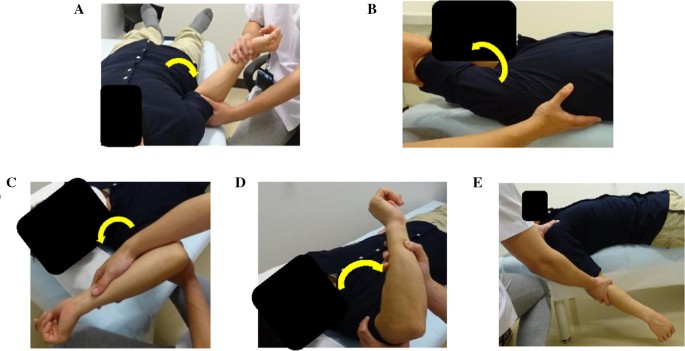
- This technique is Perform in to the less common.
- This technique is give to the passive stretching of the shoulder when the patient is in a sleep.
- Advantage of this technique= it is give to the a much better stretch on to joint capsule, but it is many complications.
- Pain is feel to after the procedure when the pushed forcefully.
- It is possible for the bones for to the break or tear the under excessive force.
Open Capsular Release:
This technique is perform to the much less common into surgical procedure.
Treatment is like as to the arthroscopic procedure, the capsule of shoulder is to the divided.
The surgeon is creating to the open Incision for to the see inside of the shoulder.
Acupuncture of the adhesive capsulitis:
- In this technique involve to the inserting extremely fine needles in to the skin at to the specific points on to the body.
- The needles are remain into place for the 15 to 40 minutes.
- During this time needles is moved/manipulated.
- Because of that needle is like as the hair thin & flexible & insert to the superficially .
- Most of the treatment is relatively to the painless.
Massages for the adhesive capsulitis :
- Physiotherapist is apply to the appropriate massages & stretches for to the treat shoulder.
- That massage is apply to the correctly.
- If massage is apply to the incorrectly because it is cause to the further injury.
Foam roller underarm massage:
- Place the foam roller under the underarm or into the affected arm.
- Rest the arm onto the floor.
- Then Lengthen to the arm.
- After that Gently roll back over to the foam roller.
- This massage is do Continue for up to 1 minute.
Foam roller shoulder massage:
- Place the foam roller under the underarm of into the affected arm.
- After that Lengthen to the arm.
- Keep the hand of on the affect arm extended upward.
- Then Roll back & forth in to the few times.
- Self-massage Simply.
- So that Use to the opposite hand for to massage onto the affected shoulder & arm.
- Then Focus on any sensitive areas.
- Gently move to the affected arm by massage onto the shoulder & arm.
Physiotherapy Treatment of the adhesive capsulitis:
- Physiotherapy treatment is mainly used for pain-relieving electrotherapy modalities & exercise which improve the ROM and stretches to the Tight muscles around the shoulder area.
- Do the Strengthening exercise of the weak muscles.
Modalities for the adhesive capsulitis:
- SWD = Shortwave Diathermy
- IR = Infrared radiation
- HOT PACK
- IFT = Inferential Therapy
- TENS = Trans-cutaneous Electrical Nerve Stimulation
- All the modality is applied on to patient for to the pain relief.
- Into the acute stage applied this applied for the pain relief.
- SWD & IR is also applied for to the reduce the stiffness.
- All the modality is applied for the 10 minutes.
- All the modality is applied before the exercise.
- Hot pack is also applied after the exercise for pain relief.
Stretching exercise of to the adhesive capsulitis:
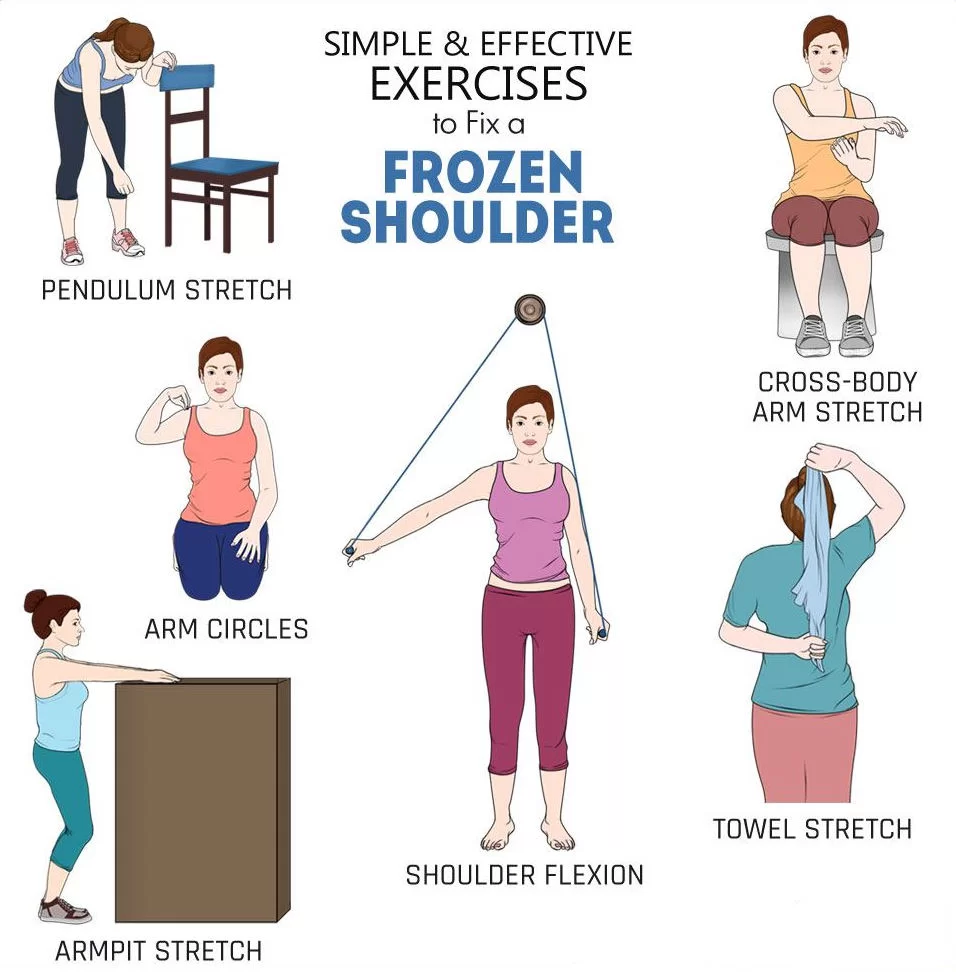
- Pendulum stretch
- Towel stretch
- Finger walk
- Cross-body St-reach Sit & stand
- Armpit stretch
- Outward rotation
- Inward rotation
Pendulum stretch:
- This exercise is do the first in this condition.
- First of all Relax to the shoulders.
- Stand / lean over to the slight & allow to the affected arm on to the hang down.
- After that Swing the arm into the small circle — about to in the foot diameter.
- Perform this exercise in 10 repetition into each direction in 1 session & perform 3 sessions per day.
- When to the improve in the symptoms, increase the swing diameter, but do not force it.
- If the patient ready for more circle, then increase the stretch with the hold of the lightweight for the swinging arm.
Towel stretch:
- Starting position is standing.
- Hold to the three-foot-long towel one end of the towel is held behind the back & another end is held in the opposite hand.
- A towel is held in the horizontal position.
- Use the good arm for the pull to the affected arm upward & stretch it.
- this stretch is also performed in the advanced version of this exercise with the towel dropped over to the good shoulder.
- The bottom of the towel is held onto the affected arm.
- Pull the the hand toward on the lower back with to the unaffected arm.
- Exercise is performed 10 to 20 times per 1 session.
- Do the 3 sessions per day.
Finger walk:
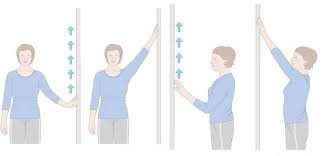
- Starting position is standing.
- Into the standing Face to the wall at three-quarters of the arm’s length.
- Reach out the hand & touch the wall into the side of the waist level with to the fingertips of the affected arm.
- With the elbow bent slightly walk slowly with the fingers up through the wall, like a spider; till raising the arm as to comfortable.
- In this exercise finger is only to the work, not to the shoulder muscles.
- Then Slowly down to the lower arm & repeat the 10 times pin 1 session.
- Do the 3 sessions per day.
Cross-body St-reach Sit & stand:
- Use the good arm to lift the affected arm at the elbow.
- Then bring the arm up & across the body,
- Exerting to the gentle pressure for to the stretch on to the shoulder.
- Hold for this position for 15 to 20 seconds.
- Do the 10 times in 1 session & 3 sessions per day.
Armpit stretch:
- Use to the good arm then lift with to the affected arm about to the breast-high.
- Then Gently bend to the knees & open up to the armpit.
- Depending on the knee bend slightly & gently do the stretch armpit.
- With each knee bend and stretch a little further, but do not force it.
- Do the exercise 10 times in 1 session & 3 sessions per day.
Outward rotation:
- Hold on to the rubber exercise band between both hands with to the elbows is angle of the 90-degree close to the sides.
- Rotate to the lower part of the affected arm to the outward to the 2 / 3 inches.
- Hold for five seconds.
- Do the exercise 10 times in 1 session & 3 sessions per day.
Inward rotation:
- Stand with the closed door & hook to the one end of the rubber exercise band around to the doorknob.
- Hold the other end of the hand onto the affected arm.
- Then holding to the elbow at to the angle of the 90-degree.
- Pull the band toward the body 2 / 3 inches & hold for 5 seconds.
- Do the exercise 10 times in 1 session & 3 sessions per day.
Exercise of the of to the adhesive capsulitis:
- Shoulder Passive ROM Exercises
- Shoulder Active ROM Exercises
- Isometric Shoulder Exercises
- Scapular Stabilization Exercises
- Wand exercise
- Pully exercise
Shoulder Passive ROM Exercises:
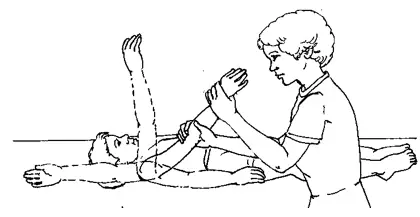
- It is used for to the increase the ROM of the shoulder.
- It is perform with the help of the other patient/therapist.
- This exercise is perform into the supine position.
- Do to the movement of this shoulder [ flexion, abduction, addcation, exertion, internal or external rotation ].
- End of all the range apply a gentle stretch in every movement.
- Do the exercise 10 times in 1 session & 3 sessions per day.
Shoulder Active ROM Exercises:
- It is used for to the increase to the ROM of the shoulder & maintain into the ROM.
- Exercise is perform on to the patient by self.
- This exercise is perform into the supine/sitting position.
- Do to the movement of this shoulder [ flexion, abduction, addcation ,exertion , internal or external rotation ]
- Do the exercise 10 times in 1 session & 3 sessions per day.
Isometric Shoulder Exercises:
- It is used to increase the ROM of the shoulder & pain relief.
- Exercise is perform with to the help of to other patient / therapist .
- Exercise is perform into the supine position .
- Do to the movement of to the shoulder [ flexion,, abduction, addcution , exertion , internal or external rotation ] .
- press into the every movement for not to the low the movement .
- Do to the exercise 10 times in 1 session & 3 sessions per day .
Scapular Stabilization Exercises:
- It is used for to the scapula stabilization
- Exercise is perform with to the help of to the other patient / therapist & also perform .
- Exercise perform into the prone position.
- Exercise into the I, T & Y pattern.
- Do to the exercise 10 times in 1 session & 3 sessions per day.
Wand exercise:
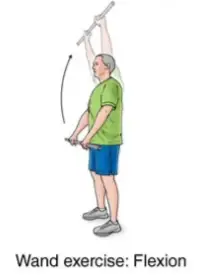
- It is used for to increase the ROM of the shoulder.
- It is active assisted exercise.
- Exercise is performed actively & with the help of the stick.
- Exercise is perform into the supine, standing & sitting position.
- Do the movement of the shoulder [ flexion, abduction, adduction, exertion, internal & external rotation ] with help of the both hands by the stick.
- Do to the exercise 10 times in 1 session & 3 sessions per day.
Pully exercise:
- It is used for the pain relief.
- Exercise is perform by the patient oneself.
- Exercise is perform into the sitting position.
- Hold the hook of the pully into both hands.
- Do to the movement into the slowly like as to the pully.
- Do to the exercise 10 times in 1 session & 3 sessions per day.
Yoga exercise of the adhesive capsulitis:
- Paschim Namaskarasana
- Ardha Matsyendrasana
- Bhujangasana
- Halasana
- Dhanurasana
- Garudasana
- Ustrasan
- Purvottanasana
Paschim Namaskarasana – Reverse Prayer Pose :-

- Start with the Tadasana.
- Keep the hands straight hanging onto either side.
- Relax to the shoulders & bent down on to the knees a little.
- Then stretch the arms backward & join the palm together like as to the a prayer pose.
- When gradually inhaling press off to the palm of the inner surface towards the spine & hold the position for a few seconds.
- Now gradually exhale & move the palms is downwards & come back in to the starting pose.
- Do to the exercise 10 times in 1 session & 3 sessions per day.
Ardha Matsyendrasana – Sitting Half Spinal Twist:
- Starting position is sitting.
- Sit to the Straight with the legs stretched out & feet together.
- Bend to the right leg & place the heel of the right foot beside of to the left hip.
- Then take the left leg over to the right knee.
- Place to the right hand on to the left foot & to the left hand behind the body.
- after that Twist to the waist, shoulders, & neck for to the left & look over to the left side shoulder.
- Hold to the position & do continue breathing in & out gently.
- After that Come back to the original starting position in Slowly.
- Repeat the yoga into the same manner in to the other side.
- Do to the exercise 10 times in 1 session & 3 sessions per day.
Bhujangasana (Cobra Pose):
- Starting position is supine.
- Lie flat on your stomach & place to head on the ground.
- Keep both hands on either side of the shoulders.
- Slowly, put the pressure on the palm & lift the body from to the torso while stretching to the back & belly muscles.
- Straight to the out the arms & keep to the shoulder blades pressed against to the back.
- Fix the gaze at the point on the ceiling & hold the position for 15-30 seconds.
- After that exhale & return to in the starting position.
- Do to the exercise 10 times in 1 session & 3 sessions per day.
Halasana (Plow Pose):
- Starting position is supine.
- Lying on the back with the raise both legs above to the stomach.
- Bend to the body & try to the extend to the legs above to the head & touch to the ground with to the toes.
- Hold to the posture for 10-15 seconds.
- After that relax for to the minute.
- Do to the exercise 10 times in 1 session & 3 sessions per day.
Dhanurasana (Bow Pose):
- Starting position is prone.
- Lie flat onto the stomach & raise both legs & torso backward.
- Then Extend the arms backward & grasp both feet with the hands.
- Hold to the position for as long as possible & do the inhaling normally.
- Then Return to the starting position.
- Do to the exercise 10 times in 1 session & 3 sessions per day.
Garudasana:
- Stretch to the shoulders & upper back.
- After that Loosen to the shoulder.
- Then release any tension from the stretch.
Ustrasana:
- It is stretching & strengthening of the front of the body.
- It is Relieved to the body of to the lower backache.
Purvottanasana:
- It is Stretch to the shoulder , neck & chest
- It is Strength to the shoulder / back / ankle & wrist

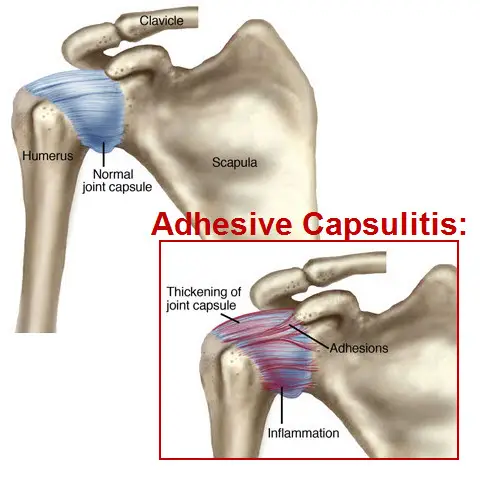
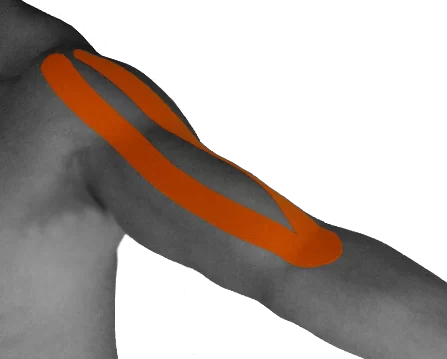
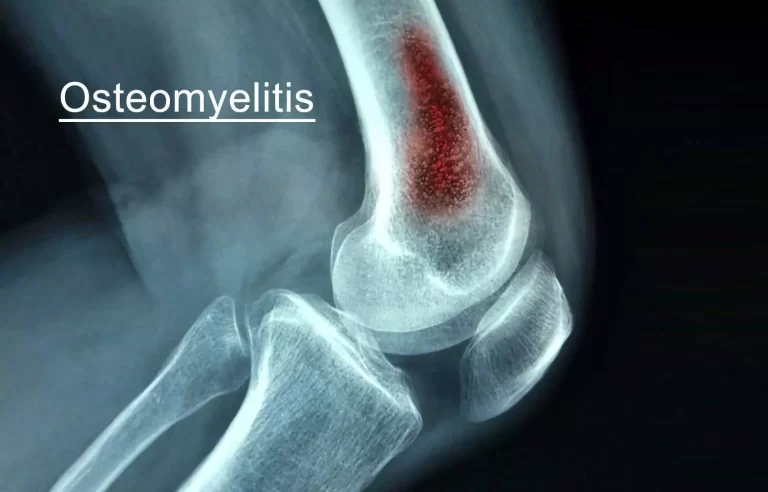
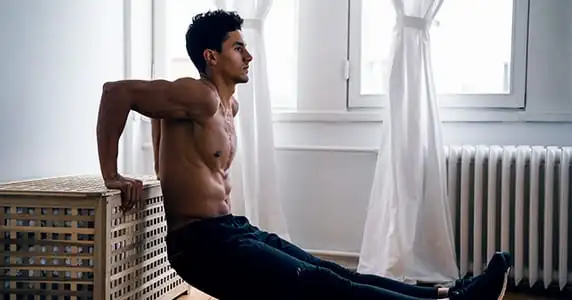


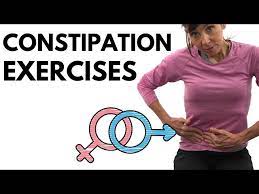
3 Comments